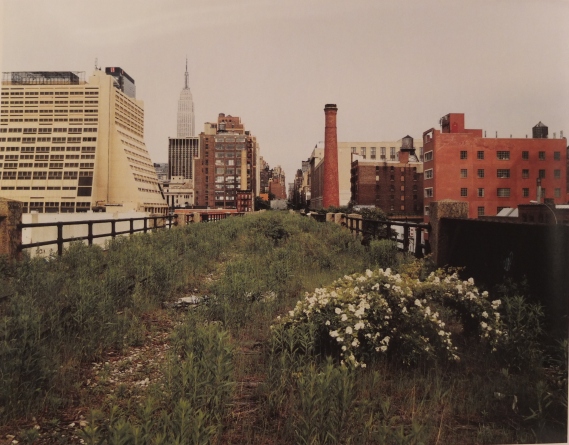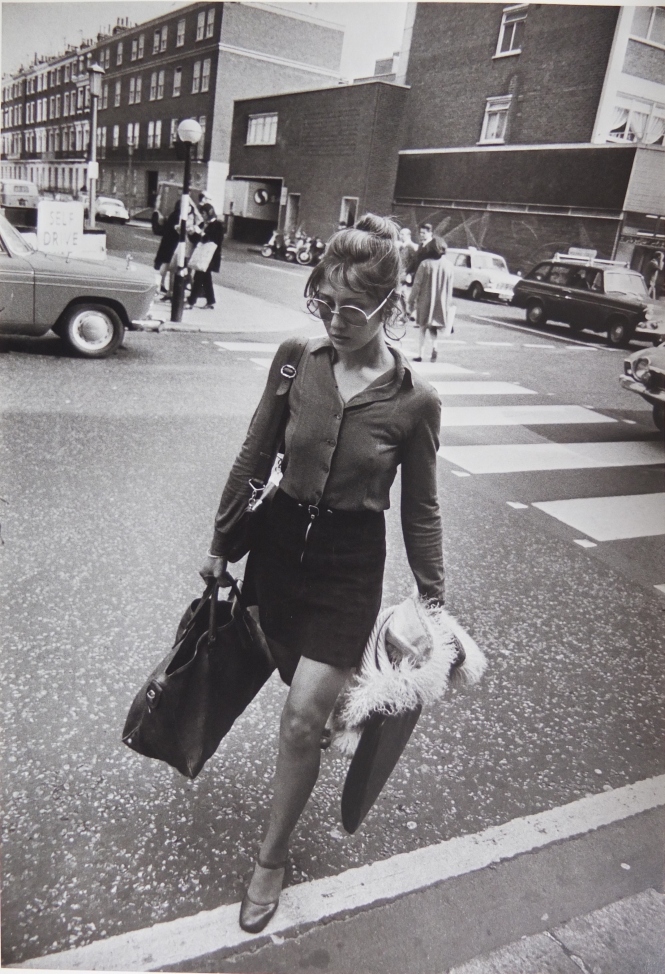A famous photograph of the derelict railway on the High Line in New York City and two texts. The first quotation is from a book about photography; the second from a book about the campaign to transform the High Line into an urban parkland.
Joel Sternfield – Looking East on Thirtieth Street on a Monday Morning in May 2000. Chromogenic (Type C) colour print
‘Like many contemporary photographers, Joel Sternfield uses essentially the same equipment as the 19th-century pioneers – a large view camera, complete with black focusing cloth and tripod…. He has his negatives scanned and printed digitally.
‘This image comes from one of his best recent projects, for which he followed the High Line, a derelict elevated railroad track that runs for over a mile in Manhattan. The line is overgrown – improbably returned to nature within one of the most densely developed cities in the world. Sternfield photographed for over a year, in all seasons, doing nothing fancy, but giving us an unexpected and decidedly intriguing view of New York City.’
Gerry Badger, The Genius of Photography, 2007. Quadrille Publishing Ltd
The High Line is a celebrated urban regeneration project, which has had a major economic and environmental impact in New York and stimulated projects in other countries. Joshua David and Robert Hammond, West Side residents who had no prior experience in planning and development, led a campaign to protect the derelict railway structure and convert it to a linear park, leading to spectacular fundraising, political support and a major public space project, transforming the surrounding neighbourhoods. Joel Sternfield’s photograph was made for this campaign.
‘We wanted to photograph it. We had been up there and seen this incredible wildscape – seen the city in a whole new way – but people couldn’t see it from the street, and our own snapshots didn’t capture it.
‘I mentioned our need for photos to Ray Gastil, at the Van Alen Institute…. Ray said, “Why don’t you call Joel Sternfield for your photos?” He said Joel had taken pictures of aqueducts outside of Rome and some other industrial-landscape photographs.
‘I found his number in the phone book and called him – was he interested? As soon as Joel saw it, he took me aside and said, “I want to do this. Don’t let anyone else up here for a year.”
‘We got permission for Joel to go up there by himself, anytime he wanted to, to photograph the High Line for a year. We had no idea at the time that these photos would come to define the project and would propel it forward the way they did.
‘Later, I found out that Joel was a famous photographer.’
‘…. we gave the photos to The New Yorker. People remember Adam Gopnik’s article as being about the High Line, but it was really about Joel and his process. It mentions Josh and and me and our efforts – it calls us a group of “West Side do-gooders.”
‘I think of Joel as a third co-founder. The photos he took became important tools for us. Instead of showing people architectural renderings, we would show Joel’s photos.
People could read different things into them. In one of his most famous photos of the High Line, looking East along Thirtieth Street on the rail yards section, you can see the Empire State Building, an old metal railroad box, the tracks, the various plants, and lots of different buildings, old and new. Some people would look at the photo and see a preservation project. Some would see horticulture. Rail buffs would get excited about the tracks. Some people imagined architecture.’
Joshua David and Robert Hammond, High Line, The Inside Story of New York City’s Park in the Sky. 2011 Farrar, Straus and Giroux



